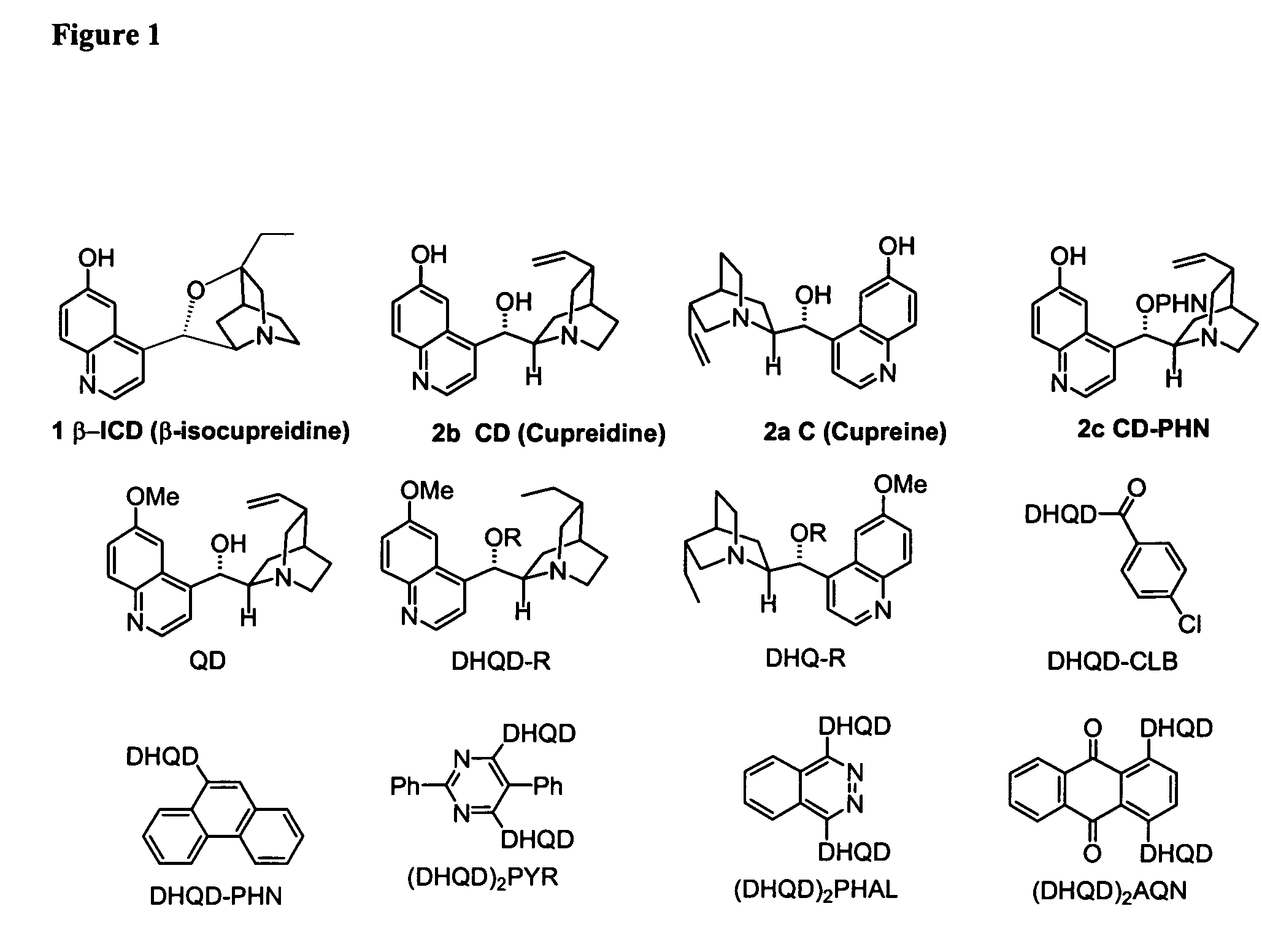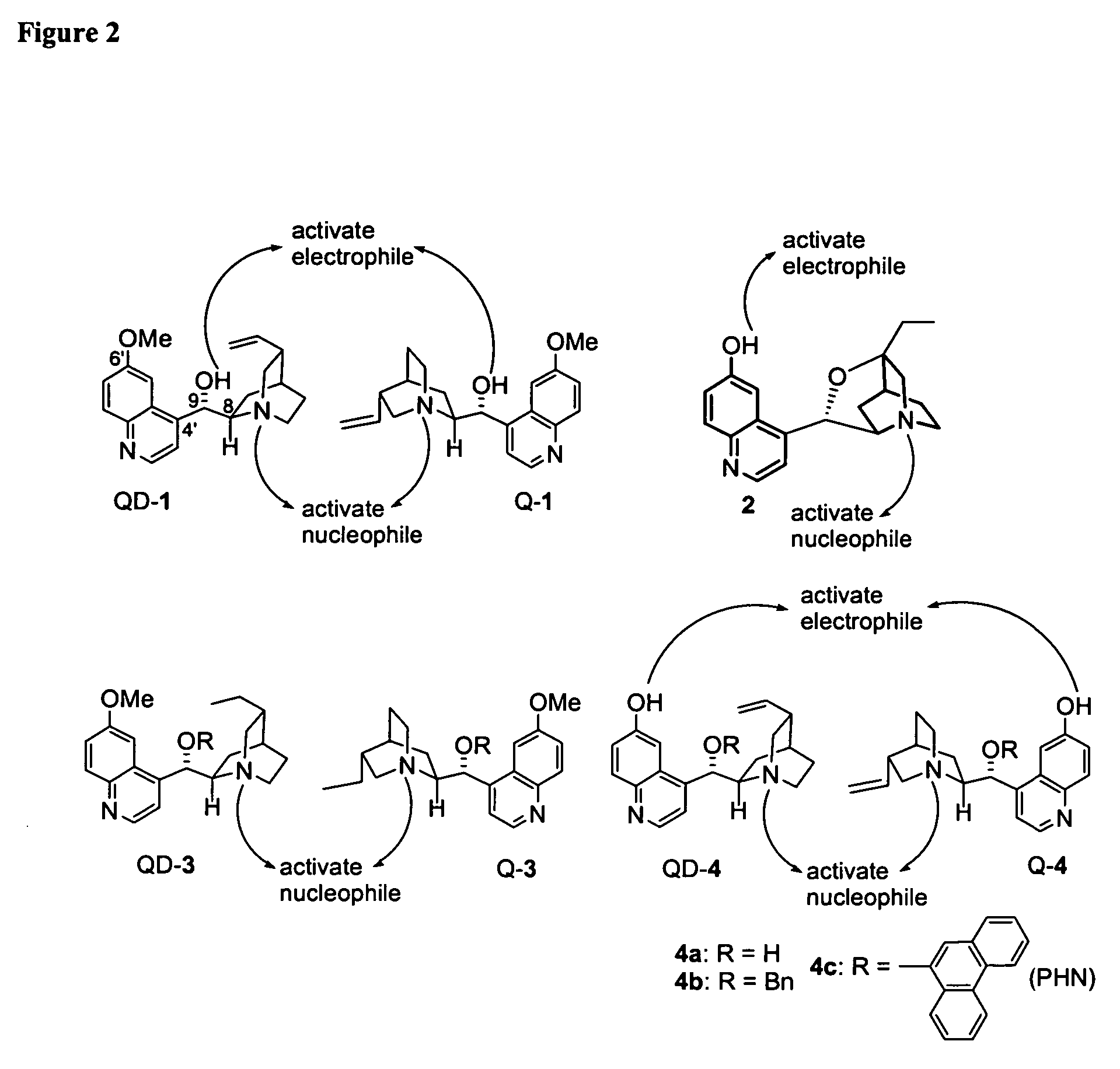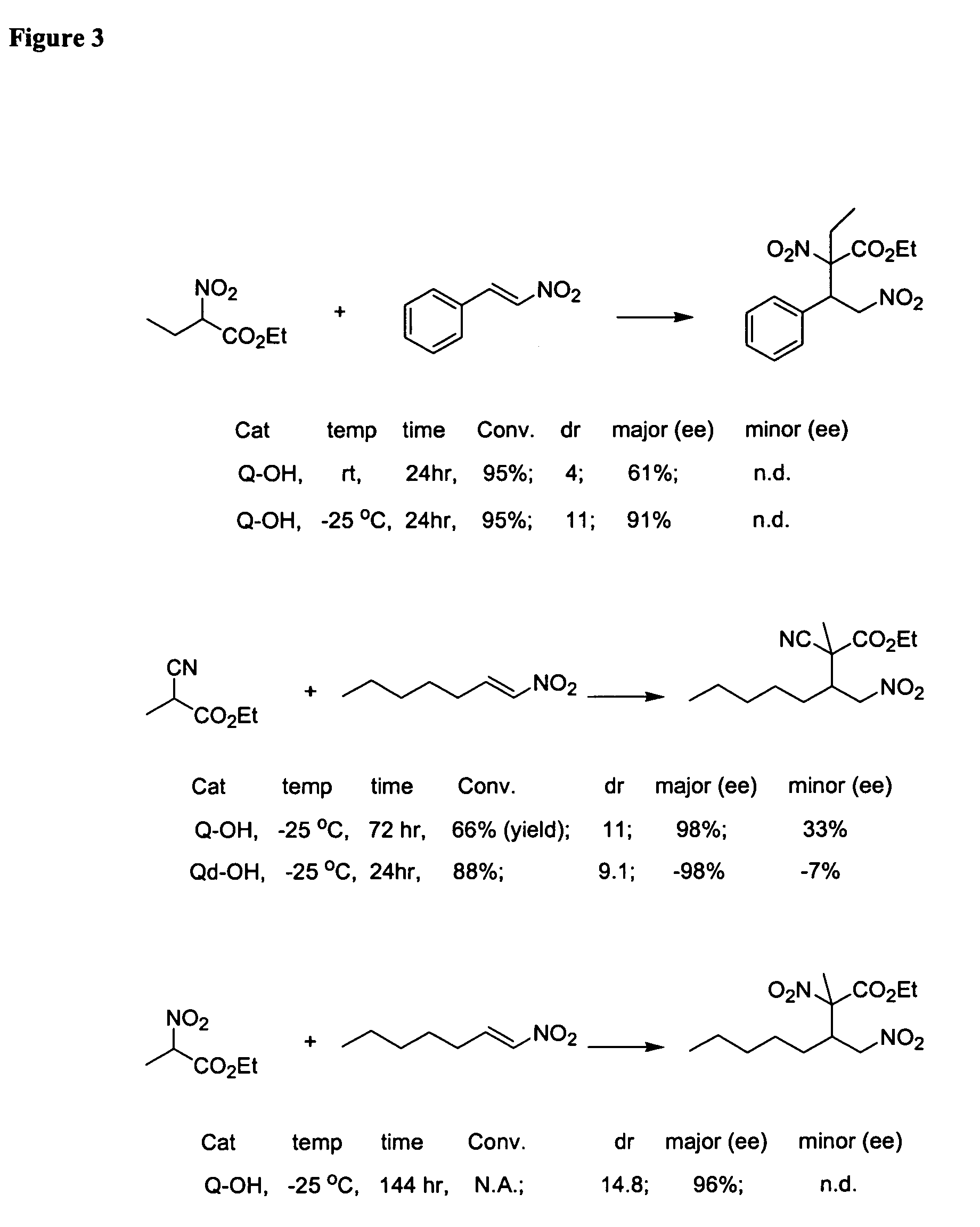Asymmetric Michael and Aldol additions using bifunctional cinchona-alkaloid-based catalysts
- Summary
- Abstract
- Description
- Claims
- Application Information
AI Technical Summary
Benefits of technology
Problems solved by technology
Method used
Image
Examples
example 1
Preparation of Quinidine 9-O-(9′-Phenanthryl) Ether, QD-PHN
[0639]
[0640] A 500 mL three-necked round-bottomed flask equipped with a mechanical stirrer, reflux condenser, and inert gas in- and outlet was charged with quinidine (QD-1, 12.8 g, 39.5 mmol, 1.2 eq). The flask was flushed for 30 min with a gentle stream of argon. Anhydrous dimethyl sulfoxide (130 mL, freshly distilled in presence of CaH2) was added, and the reaction mixture was stirred at room temperature until all the quinidine was dissolved. Sodium hydride (60% oil dispersion, 2.0 g, 1.5 eq.) was added in small-portions yielding an orange, slightly cloudy-solution of the corresponding sodium alkoxide. Upon addition of pyridine (6.4 mL, 2.4 eq.) and copper(I) iodide (7.8 g, 1.2 eq.) to the reaction mixture at room temperature, the color of the reaction mixture was changed from orange to dark green. After 30 min all of the precipitate dissolved, and a clear solution was formed. 9-iodophenanthrene (10.0 g, 32.9 mmol), was a...
example 2
Preparation of Quinidine 9-O-Benzyl Ether, OD-OBn
[0641]
[0642] To the solution of QD (2.0 g, 6.2 mmol) in DMF (20 mL, freshly distilled from the suspension of CaH2 in DMF) was added NaH (0.68 g, 57% suspension in mineral oil, 2.5 eq.) and let it stirred at rt for 2 h. Then BnCl (0.78 mL, 1.1 eq.) was added dropwise through syringe in 10 minutes and let it stir overnight. When the reaction was done, the brine was added carefully (20 mL) and the resulting mixture was extracted with ethyl acetate (100 mL). The organic phase was washed with brine (3×50 mL) and dried over Na2SO4. The solvent was removed in vacuo and purified by flash chromatography (MeOH / Ethyl acetate: 1 / 40) to give a yellowish oil (2.3 g, 90% yield). 1HNMR (400 MHz, CDCl3) δ: 8.77 (d, J=5.2 Hz, 1H), 8.05 (d, J=9.2 Hz, 1H), 7.49 (d, J=4.0 Hz, 1H), 7.40-7.31 (m, 7H), 6.00-5.92 (m, 1H), 5.23 (br, 1H), 5.02-5.00 (m, 1H), 4.97 (s, 1H), 4.49-4.37 (AB, 2H), 3.90 (s, 3H), 3.26 (m, 1H), 3.09-3.08 (m, 1H), 2.93-2.71 (m, 3H), 2.26...
example 3
General Procedure for the Preparation of OD-4a, OD-4b, QD-4c and Q-4a
[0643]
[0644] Under N2 atmosphere, a suspension of QD (8.0 mmol) in dry DMF (50 mL, freshly distilled from the suspension of CaH2 in DMF) was heated at 110° C. for 4-6 hours until a TLC analysis showed that QD was completely consumed. The reaction mixture was cooled down to room temperature, then mixed with sat. NH4Cl (40 mL) and H2O (50 mL) and monitored by pH paper till pH=7. The resulting mixture was extracted with Ethyl Acetate (2×200 mL), the organic phase was washed with brine (4×50 mL), dried over Na2SO4, and concentrated in vacuo. The residue was subjected to flash chromatography (Ethyl Acetate / MeOH / NEt3 system) to afford the desired product.
[0645] QD-4a was obtained as a yellowish solid in 92% yield from quinidine. [α]D25=+240.3 (c 1.13, EtOH); 1HNMR (400 MHz, CD3OD) δ 8.58 (d, 1H, J=4.4 Hz), 7.88 (d, 1H, J=9.2 Hz), 7.62 (d, 1H, J=5.2 Hz), 7.31 (dd, 1H, J=2.4 Hz, 9.2 Hz), 7.25 (d, 1H, J=2.4 Hz), 6.10-6.19...
PUM
| Property | Measurement | Unit |
|---|---|---|
| Temperature | aaaaa | aaaaa |
| Temperature | aaaaa | aaaaa |
| Volume | aaaaa | aaaaa |
Abstract
Description
Claims
Application Information
 Login to View More
Login to View More - R&D
- Intellectual Property
- Life Sciences
- Materials
- Tech Scout
- Unparalleled Data Quality
- Higher Quality Content
- 60% Fewer Hallucinations
Browse by: Latest US Patents, China's latest patents, Technical Efficacy Thesaurus, Application Domain, Technology Topic, Popular Technical Reports.
© 2025 PatSnap. All rights reserved.Legal|Privacy policy|Modern Slavery Act Transparency Statement|Sitemap|About US| Contact US: help@patsnap.com



